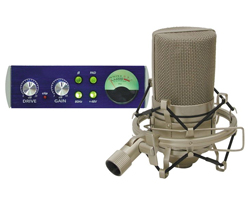
It’s a similar situation at the input of a mic preamp.
If there is no transformer at the input of a mic preamp, capacitors are usually used to keep the +48 volt phantom supply voltage from traveling forward into the active circuitry of the preamp where it could cause damage.
Capacitors can cause phase shift at low frequencies. They can also smear the audio signal because of a problem known as dielectric absorption. Some capacitors are much better than others in this regard.
Transformers have their own potential problems, including phase shift and ringing at high frequencies, and core saturation at high signal levels and/or low frequencies. A well-designed transformer minimizes these problems.
On the positive side, a transformer coupled mic preamp has a much higher common mode impedance and a much higher breakdown voltage than most transformerless mic preamps, which results in the potential for a much higher common mode rejection ratio, and the ability to handle and reject much higher common mode signal levels.
This is extremely important where there are high levels of RF or other interference.
Ty Ford: Are there any ways to make better choices about mics and preamps than “Read the specs, listen, if you like what you hear, buy it?”
George Massenburg: The people who “listen” better do better work. There is no short-cut, nor is there a push-button answer here.
John Hardy: There are some recorded tracks available that demonstrate many mic preamps and mics, but since you were not there to hear the original performance, you do not know all of the details of the signal path, room effects, what the original sound source sounded like from the exact mic position, etc.
You must try things under your own circumstances, listening from the mic position and eliminating as many variables as possible.
Ty Ford: There are now tube mics that are quieter than some FET mics. Other than a tube’s absorptive capabilities as a result of plate saturation, have better components and circuit designs made the tube/solid state argument moot?
George Massenburg: Well, I don’t know anything about tubes, but I can tell you that discrete components haven’t evolved as far or as quickly as other semi technologies.
I would really like to have faster, higher-gain, higher-voltage transistors to use, but it just hasn’t happened.
John Hardy: There is certainly much confusion and misinformation regarding the supposed need for tube circuits to “warm-up” the often cold and harsh sound of digital circuitry. The cold and harsh quality is not the fault of solid-state circuitry. It is the fault of crappy solid-state circuitry that happens to sound cold and harsh because it is crappy.
A well-designed solid-state mic preamp can do wonders to warm things up. Actually, a well-designed solid-state circuit is probably bringing things back to “room temperature,” which I think is what most people really want. A tube circuit may be going beyond room temperature to a colored sound quality.
